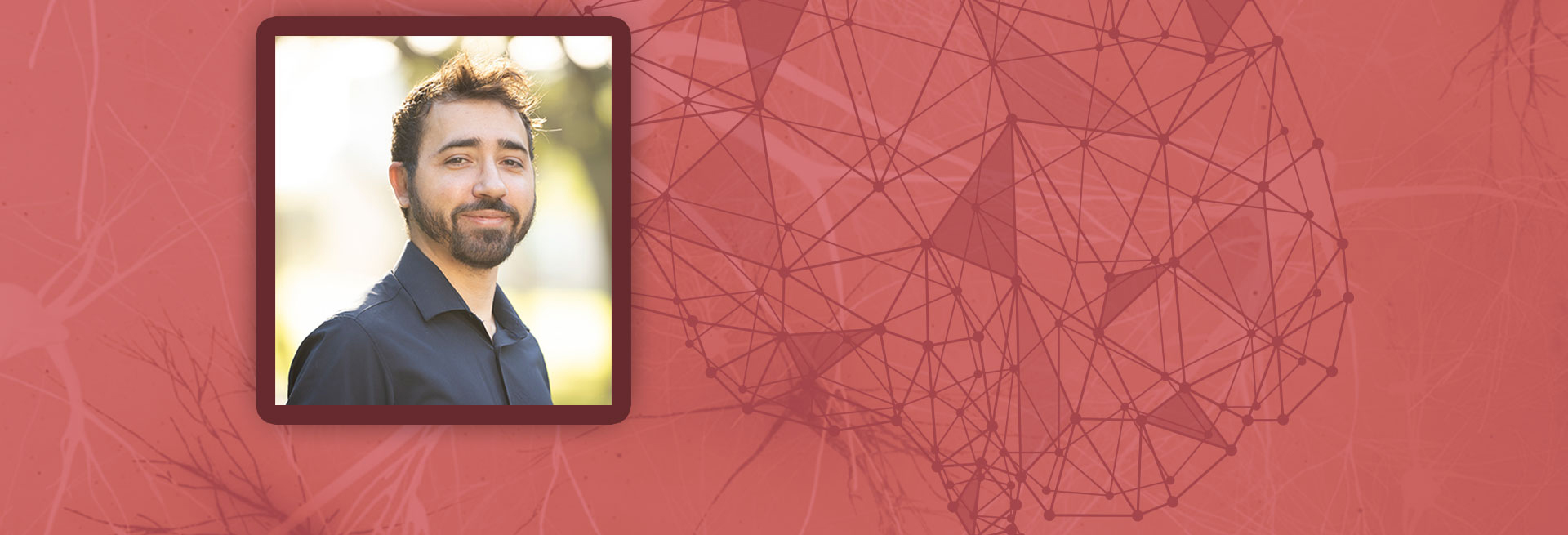By Chelsey Matheson
Advanced concepts of neuroscience, artificial intelligence, physics and mathematics can be accessible to anyone.
That’s how Rodrigo Pena, Ph.D., said he approaches his work in computational neuroscience.
“I want to show people they don’t have to be scared of math,” Pena said. “But to expose them to this kind of research, you have to adapt the language to make it approachable and show the many opportunities for collaboration among different disciplines.”
Pena discovered his interest in computational neuroscience as an undergraduate student at the University of São Paulo in Brazil. He began his studies in medical physics, but found himself drawn more to theoretical mathematics, physics and computer science.
“I didn’t want to lose my connection to biology,” he said, “but the hospital setting was not for me. That’s when I found computational neuroscience and realized it’s very interdisciplinary. It’s an area where you need to have good communication skills to show that – despite all the math and physics – the questions we are trying to solve are always neurobiologically grounded.”
Pena’s research focuses on the computational modeling of ion channels, synapses, neurons, networks and systems, which involve many spatial scales and their interactions. He is also specialized in dynamical systems, stochastic processes, information theory and deep learning.
According to Pena, advances during the last 50 years have led to the creation of highly sophisticated mathematical models of different areas of the brain. As a result, biological neuroscientists can collaborate with computational neuroscientists to test new questions about the brain via a computer model first, allowing them to create a more educated hypothesis before they begin doing experiments in the lab.
Pena also sees computational neuroscience as a connection point between different neuroscience specialties.
“Each lab’s experiments are focused on a different temporal or spatial scale, which makes it difficult to connect data between different specialties,” Pena said. “Now, with computational neuroscience, you can create models that combine data from different labs, which can lead to new understanding of the brain and new hypotheses.”
Pena joined the faculty at Florida Atlantic in August 2023 as assistant professor in biological science in the Charles E. Schmidt College of Science and as a member of the Stiles-Nicholson Brain Institute.
Pena’s lab is located on Florida Atlantic’s John D. MacArthur Campus at Jupiter, a biomedical research hub that is home to the Stiles-Nicholson Brain Institute, Max Planck Florida Center for Neuroscience and the Herbert Wertheim UF Scripps Institute for Biomedical Innovation & Technology.
“I’m very busy at the moment, talking with all the different labs on campus and really trying to make those connections,” Pena said. “I cannot do my work alone. I need those collaborations.”
Pena’s passion for collaboration is not isolated to advanced neuroscience research. One of his first initiatives on campus was to start a science and culture series, called “Synaptic Popcorn Cinema,” which used films as an opportunity to get neuroscience out of the lab and classroom and make it accessible to everyone.
“The goal is to use cinema as a way to bring people together and to expose people with different backgrounds and interests to this kind of research,” Pena said.
Each installment in the Synaptic Popcorn series matched a film to a research study. Attendees were encouraged to read the study ahead of the movie. Following each screening, Pena and other faculty led a discussion. Pena said the discussions encouraged attendees to think about the multiple connections neuroscience has to other disciplines, including artificial intelligence, computational science and psychology.
“There is a stereotype that a person who does math and computer science isn’t very social,” Pena said. “But my door is always open. I wanted to do Synaptic Popcorn so that people could interact with this kind of research in a relaxed setting where they could have discussions that would make these concepts accessible.”
